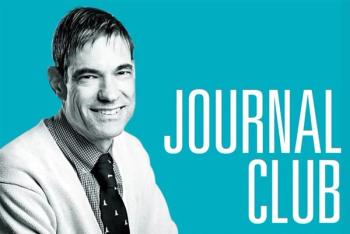
- Consultant for Pediatricians Vol 5 No 10
- Volume 5
- Issue 10
Benign Epilepsy:
How long should I keep giving anticonvulsant medications to a child with benign genetic epilepsy?
How long should I keep giving anticonvulsant medications to a child with benign genetic epilepsy?
----MD
Benign epilepsies of childhood are seizure disorders that occur in normally developing children with no recognized brain insult. Most children with one of the benign epilepsies have seizures that are easily controlled, and many are able to eventually discontinue antiseizure medication without seizure recurrence.
"Benign epilepsy of childhood with central temporal spikes" (BECTS, or Rolandic epilepsy) is the best-recognized benign epilepsy that primary care physicians are likely to encounter. Onset is usually between 3 and 13 years.1 Seizures usually begin as the child is awakening from sleep, with facial sensation changes or motor symptoms; however, it is the secondarily generalized seizure that parents usually hear and respond to. Thus, the "partial" nature of the seizures is often not recognized until after an electroencephalogram (EEG) is obtained. The EEG in patients with BECTS characteristically shows sleep-activated epileptiform spike discharges in the central-temporal region. Other benign epilepsies of childhood are less well characterized.
Most pediatric neurologists treat children with benign epilepsy for 2 years. In general, if a child has been seizure-free for 1 to 4 years, the likelihood that stopping antiseizure medication will be successful (ie, there is no recurrence of seizures) is approximately 70%.2,3 However, if seizures do recur while antiepileptic medication is being tapered--or after its discontinuation--treatment is restarted and continued for another 2 years. It is important to remind parents about seizure precautions (eg, do not leave a child with a history of seizures unattended in a bathtub or hot tub) and seizure first aid before tapering antiseizure medications.
----Donald M. Olson, MD
Associate Professor of Neurology and Pediatrics
Stanford University Medical Center
Palo Alto, Calif
References:
REFERENCES:
1. Guerrini R. Epilepsy in children.
Lancet.
2006;367:499-524.
2. Camfield CS, Camfield PR, Gordon KE, et al. Predicting the outcome of childhood epilepsy: a population-based study yielding a simple scoring system.
J Pediatr.
1993;122:861-868.
3. Shinnar S, Berg AT, O'Dell C, et al. Predictors of multiple seizures in a cohort of children prospectively followed from the time of their first unprovoked seizure.
Ann Neurol.
2000;48:140-147.
Articles in this issue
about 19 years ago
Photoclinic: Hereditary Hemorrhagic Telangiectasiaabout 19 years ago
Diabetic Ketoacidosis in Children:about 19 years ago
Adolecent Medicine Update:about 19 years ago
A Collage of Hereditary Childhood Disordersabout 19 years ago
Orbital Abscessabout 19 years ago
Herpes Zoster (Shingles) in a Teenagerabout 19 years ago
Case in Point: Night Terrorsabout 19 years ago
Editors Commentary: Three in One . . .about 19 years ago
Photoclinic: Incontinentia PigmentiNewsletter
Access practical, evidence-based guidance to support better care for our youngest patients. Join our email list for the latest clinical updates.








